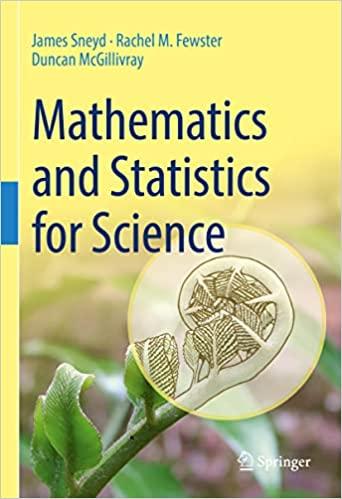The rate, V, of an enzyme reaction is often described by the MichaelisMenten equation, V = VmaxS
Question:
The rate, V, of an enzyme reaction is often described by the Michaelis–Menten equation, V =
VmaxS K + S
, where Vmax and S are constants. This is an equation we’ve used a lot in this book. However, the rate of an enzyme reaction is also commonly described by the Hill equation, V =
VmaxS n
Kn + S n
, for some constant n > 1. Typically n is 2 or 3; for haemoglobin we use n = 4, as previously discussed on page 265 and Fig.
12.9.
a. Just to make things a bit simpler, set n = 2 in the Hill equation. Then show that the Hill equation has an inflection point but the Michaelis–Menten equation doesn’t.
b. Show that, for a general n, the inflection point occurs at S =
n q
n−1 n+1 K. Where is the inflection point in the limit as n → ∞?
Don’t calculate the second derivatives or the limit by hand! Use a computer.
c. Show that the inflection point occurs at the steepest part of the Hill function.
To do part c you don’t need to do any additional complicated calculations.
d. Now let n be any number. Draw Hill functions for n = 2, 3 and 4. How does the slope of the curve at the inflection point depend upon n?
Don’t calculate this analytically, just describe approximately.
e. When n is a large number (n = 100, say), what does the Hill equation look like? What is the scientific interpretation of the Hill function when n is large?
Step by Step Answer:

Mathematics And Statistics For Science
ISBN: 9783031053177
1st Edition
Authors: James Sneyd, Rachel M. Fewster, Duncan McGillivray





